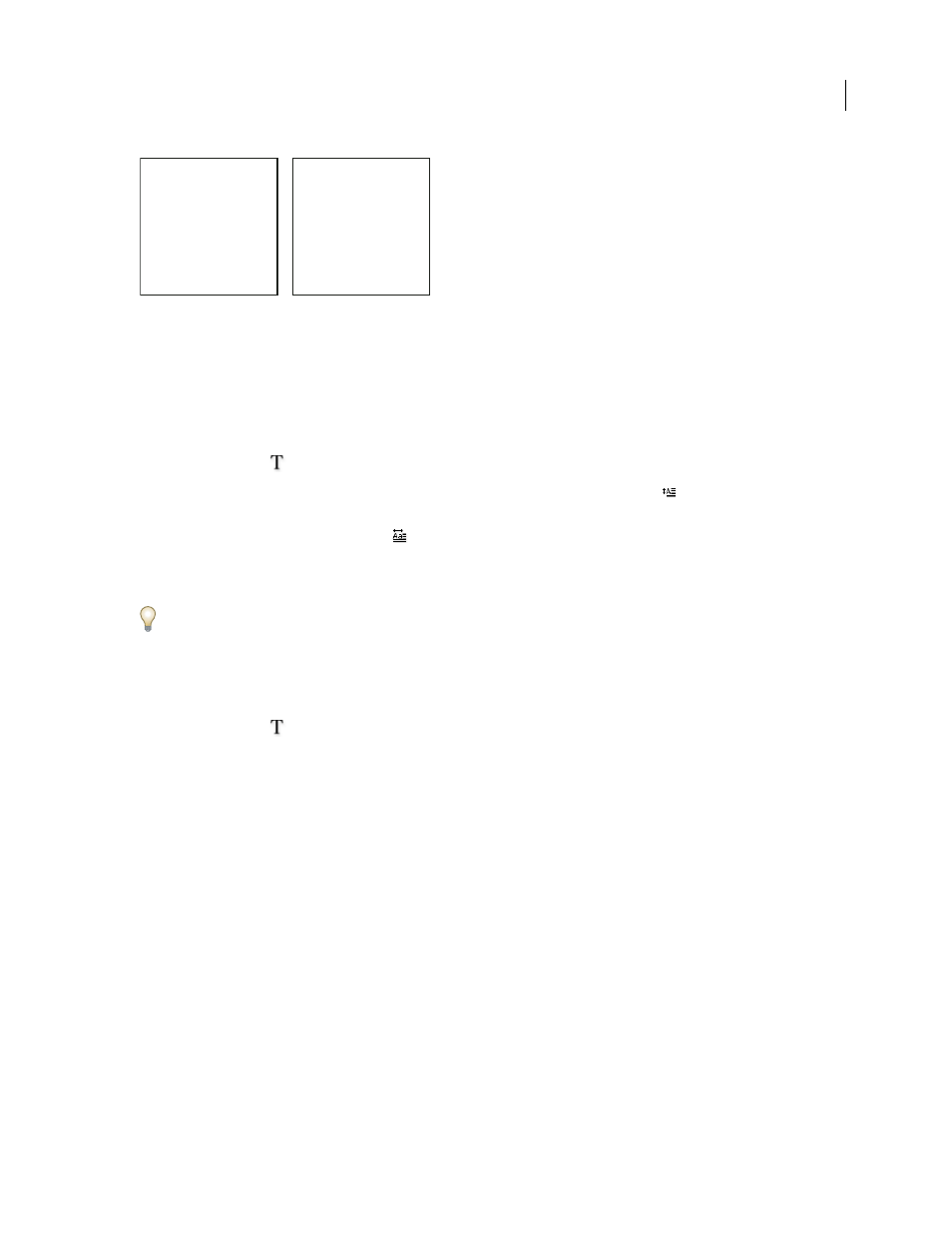Add rules (lines) above or below paragraphs, After – Adobe InDesign CS3 User Manual
Page 230

INDESIGN CS3
User Guide
223
One-character, three-line drop cap (left), and five-character, two-line drop cap (right)
See also
“Drop caps and nested styles” on page 173
“Apply a character style to a drop cap” on page 173
Create a drop cap
1
With the Type tool
selected, click in the paragraph where you want the drop cap to appear.
2
In the Paragraph panel or Control panel, type a number for Drop Cap Number Of Lines
to indicate the number
of lines you want the drop cap to occupy.
3
For Drop Cap One Or More Characters
, type the number of drop cap characters you want.
4
To apply a character style to the drop cap character, choose Drop Caps And Nested Styles from the Paragraph
panel menu or the Control panel menu, and then choose the character style you created.
You can also use the Drop Caps And Nested Styles dialog box to align the drop cap to the text edge, reducing the
amount of space on the left side of the drop cap, and adjust for drop cap letters with descenders, such as “g” and “y.”
If you want to resize, skew, or change the typeface of the drop cap letter for added effect, select the letter or letters and
make the formatting changes.
Remove a drop cap
1
With the Type tool
selected, click in the paragraph where the drop cap appears.
2
In the Paragraph panel or Control panel, type 0 for Drop Cap Number Of Lines or Drop Cap Number Of
Characters.
Add rules (lines) above or below paragraphs
Rules are paragraph attributes that move and are resized along with the paragraph on the page. If you’re using a rule
with headings in your document, you may want to make the rule part of a paragraph style definition. The width of
the rule is determined by the column width.
The offset for a rule above a paragraph is measured from the baseline of the top line of text to the bottom of the rule.
The offset for a rule below a paragraph is measured from the baseline of the last line of text to the top of the rule.
A
fter breakfast I wan
man and guess out
but Jim didn’t want
bad luck; and besides, he
ha’nt us; he said a man th
likely to go a-ha'nting a
planted and comfortab
reasonable, so I didn’t sa
After
breakfast
guess out
want to. He said it would fe
come and ha'nt us; he said
to go a-ha'nting around th
That sounded pretty reaso
keep from studying over i
and what they done it for.
